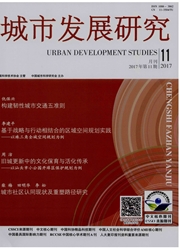

 中文摘要:
中文摘要:
为了解决城市雨水洪涝灾害与水资源短缺问题,借鉴国外提出的LID、SUDS等研究,我国提出了海绵城市等相关理论。在综合分析国内外相关案例基础上,提出了“划分集水区、提取土地利用类型、计算调蓄容积、技术与施工时序确定”的规划步骤。以青岛西海岸新区核心区为示范区,通过Arc GIS的Hydrology模型将核心区划分为38个集水区,将每个集水区按地形地貌进行分类提取;然后以第25集水区为例,详述了海绵城市调蓄容积等指标的具体设计与计算,并引入了地形湿润指数,用于指导海绵城市建设地块的优先排序;最后总结提出推动海绵城市建设的规划措施。
 英文摘要:
英文摘要:
In order to solve the problems of urban rain flood disasters and shortage of water resources caused by urbanization, the theory of sponge city, which referred to the foreign research (like LID and SUDS), was proposed in our country. Based on the relevant case study, the path involving 'the catchment division, the extracting for land-use, the calculation of storage capacity, the determining of technology and priority of construction' was presented. Taking the 28.26km~ core areas at the west coast of Qingdao as the demonstrative areas, the areas were divided into 38 catchments by the Hydrology model of ArcGIS. Then the land use types of each catchment were extracted according to the land use planning and real condition. Then taking the 25th catchment as an example, the design and calculation of storage capacity were introduced in details. In addition, the topographic wetness index was introduced to guide the priority of sponge city construction for every block. Finally, the construction and planning measures of sponge city were put forward. Currently, the sponge city planning and construction is still in the stage of exploration, so this study has a guiding and demonstration effect.
 同期刊论文项目
同期刊论文项目
 同项目期刊论文
同项目期刊论文
 期刊信息
期刊信息
